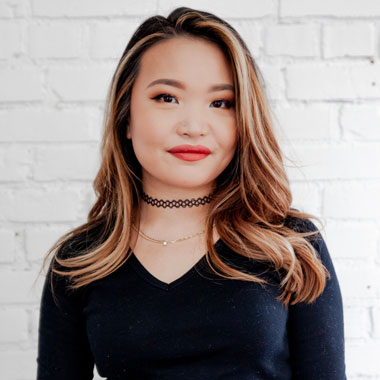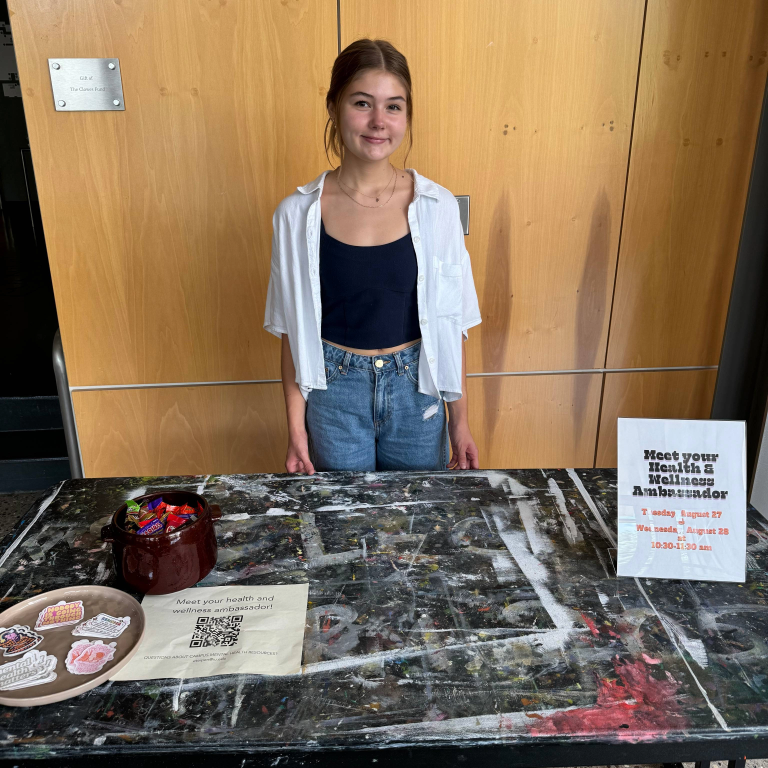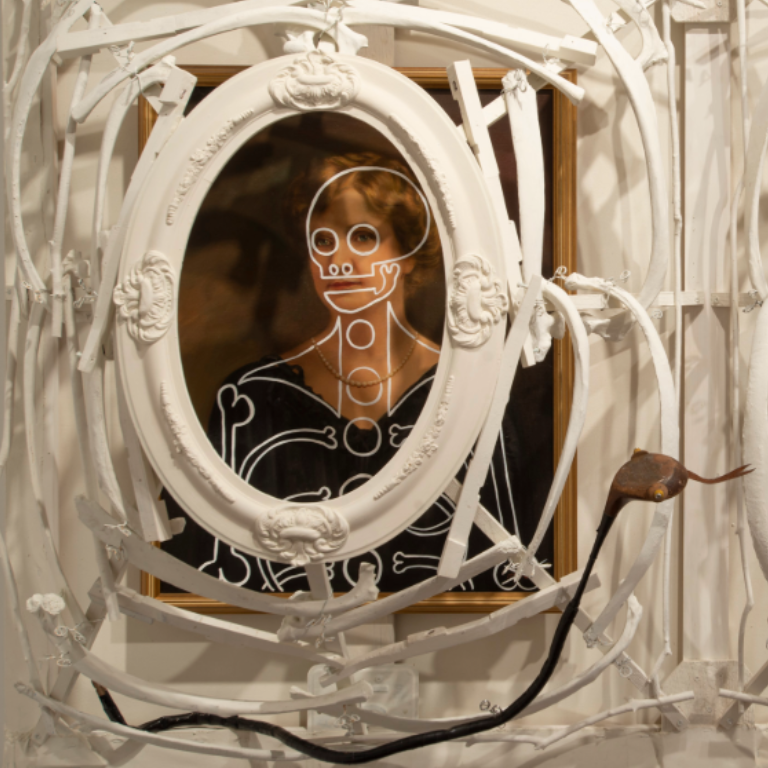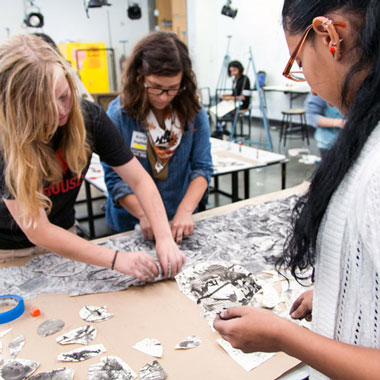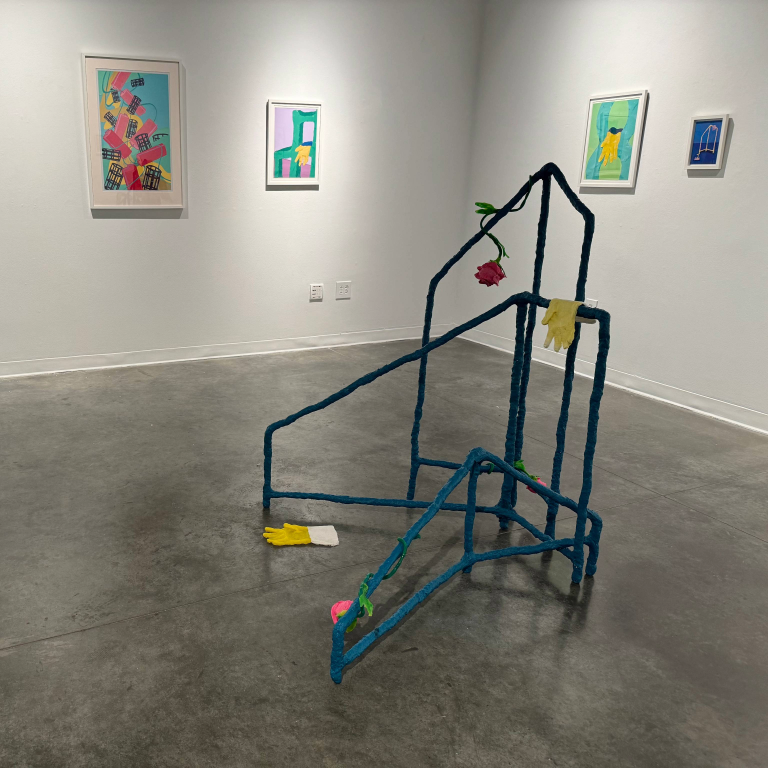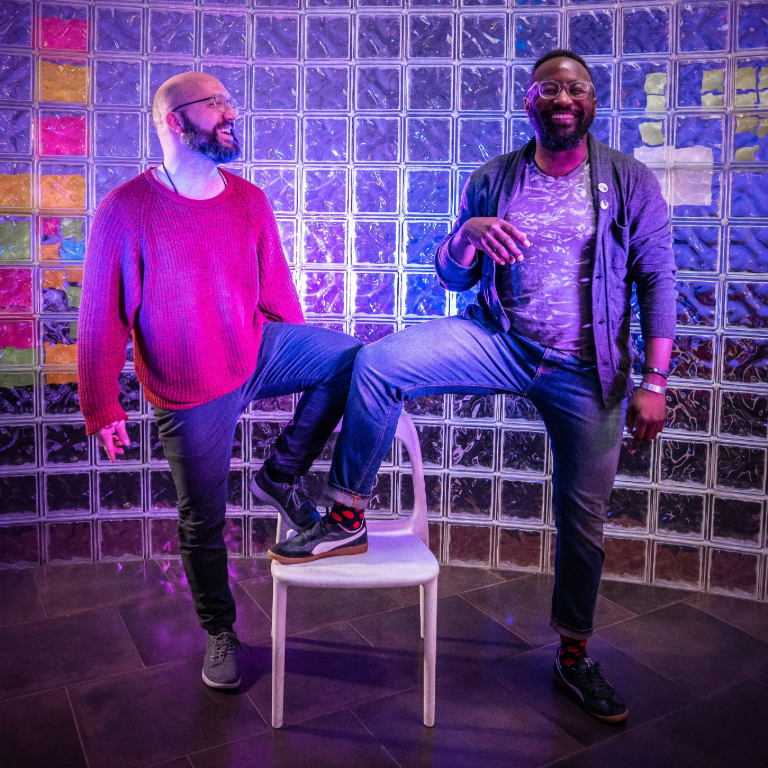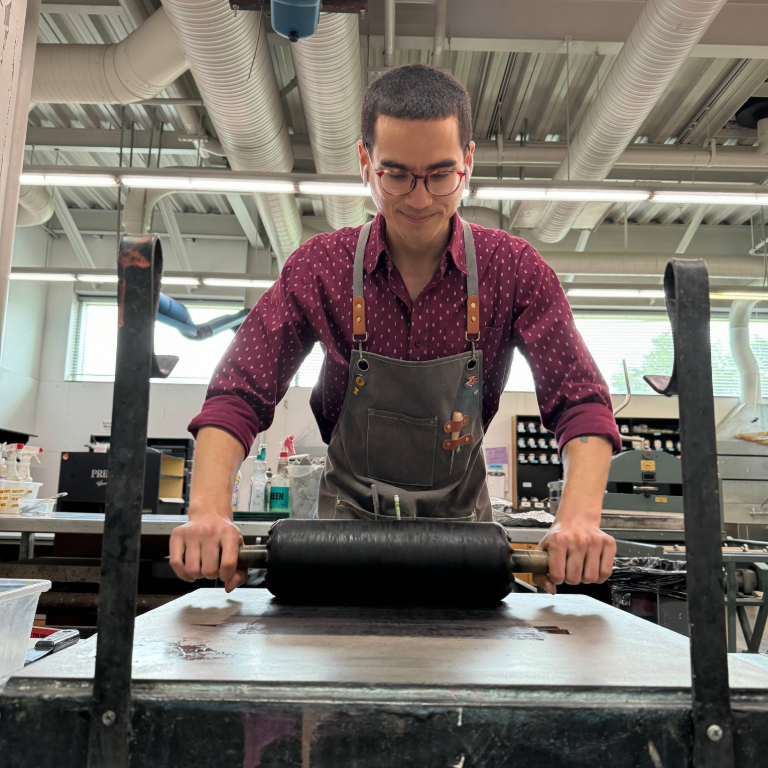IUPUI recognizes 50 graduate and professional students each year for their achievements in campus leadership, scholarly work, and community engagement.
The Elite 50 are the best, embodying everything that distinguishes our campus. Among this year's honorees is Herron's own Taylor McLane, a master's candidate in art therapy from Grand Rapids, Michigan, who will graduate in May.
Taylor was interviewed via email to learn more about her contributions to the campus and Indianapolis communities and her plans after graduation.
HERRON: What compelled you to pursue graduate school, specifically to launch a new career in art therapy?
TAYLOR MCLANE: I've had an interest in art therapy since completing my undergraduate degree. I received my B.F.A. but felt I would not have the stamina to continue straight into my master's. I took a break and worked full-time as a licensed cosmetologist.
Funny enough, people seem to naturally confide in stylists. In many ways, I felt like I was already holding space for clients. That, and a combined passion for understanding and helping people through art, reignited my motivation to pursue art therapy. The timing felt right. I'd saved money, built up some steam again, and dove in.
HERRON: What is it like being a non-traditional student at IUPUI? Have you faced any difficulties in maintaining a work-life balance compared to your younger classmates? If so, how did you overcome these challenges?
MCLANE: Art therapy comes with a unique set of challenges: the effect art materials have on people, identifying clinical meaning in the artwork, and the role of an art therapist. I knew the work-life balance would be stressful when I entered Herron's program. I've quickly learned to set boundaries and how to prioritize and distribute my workload.
The way I study as a grad student is very different from when I was an undergrad. I've hit several moments in time when I neglected what my mind and body were trying to tell me, trying too hard to push through it. Overcoming those challenges meant being honest with myself, giving myself permission to give myself grace, and respecting my boundaries. I've had to learn that lesson faster because of the nature of the program, with friends, family, and faculty support. I could not have done it without their help.
HERRON: Our graduate students in art therapy are required to complete 700 clinical hours, leaving little time outside of their studies to pursue other interests. Despite this, you've managed to volunteer your time at Exodus Refugee Immigration, an organization that helps people rebuild their lives in Indiana, through art-making wellness groups. Tell us about these workshops and how you collaborated with Exodus to run these programs.
MCLANE: A great thing about art is that it goes beyond the spoken language. I read an article about the effectiveness of art therapy as a service for Syrian refugees and felt impassioned. So, I was thrilled to have the opportunity to work with Exodus.
I collaborated with the director of their mental health programs, translators, and my supervisor, Chelsea Leeds, who helps coordinate these opportunities for Herron's art therapy students. We combined education for mental health issues, such as PTSD and depression, with coping mechanisms we find in art therapy as another mode of self-expression. I collaborated with my peers from the art therapy program to create and guide art interventions for refugees from regions of Africa.
HERRON: You're currently working as a research assistant for Eileen Misluk, assisting her with research on eating disorder advocacy and education. In this role, you've helped plan and promote a series of creative arts workshops and a public event discussing eating disorders on college campuses. How have these experiences aided your learning and growth as a researcher?
MCLANE: It has undoubtedly increased my empathy as a future art therapist and as someone who has friends who suffer from eating disorders. As a researcher, I am endlessly grateful for the opportunity to learn more from Eileen about eating disorder advocacy and the structure of treatment options for this population. This has changed how I critically examine research. It also alters how I plan to provide treatment and resources to clients dealing with eating disorders or other body image issues.
Body image affects many of us, with and without formal diagnoses, and this research has changed my perspective on how society, culture, and intersectional identities influence body image. I've learned that body image is a lived experience that extends beyond a two-dimensional representation.
HERRON: What is your favorite part of therapeutic arts practices?
MCLANE: I am excited to offer creative treatment options for my clients. Many people seem hesitant to participate in art therapy, believing they have to be "good at art" to benefit from art therapy, but I equate it to feeling better after singing to a favorite song. You don't have to be good at singing to enjoy it.
My favorite part about art therapy is that it can be so many things, offering clients different ways to feel seen or understand themselves. It can be the calmness of moving watercolor paint across a page or tearing clay apart out of anger. Sometimes what people go through is hard to articulate in words because feelings can be vague or multilayered. Artmaking gives difficult-to-process emotions a form. I don't expect clients to produce works like van Gogh or Rembrandt.


